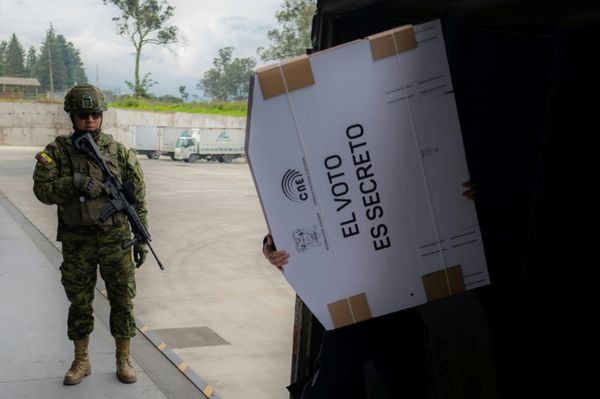
Melitta, Hario, V60 – these are the three big names on the pour-over coffee maker scene. Each brand has different coffee offerings, but which is the best?
After a year of testing the best pour-over coffee makers, I think Melitta makes my favorite models. They're known for their mess-free, filter-style coffee. Rather than just covering the basics, Melitta offers some smart flourishes. For example, I tested the Aristan Set, available on Amazon. It comes with a bamboo tray and a porcelain coffee canister. The simple style takes up more room but would work in everything from a cozy farmhouse to a Scandi-minimalist kitchen. Even though it looks beautiful, the best part about the Melitta is the coffee it brews.
But while the Melitta pour-over process is simple, I spotted a few places where novice brewers could make mistakes that would ruin their cup of coffee. Here's everything you need to know.
Specifications
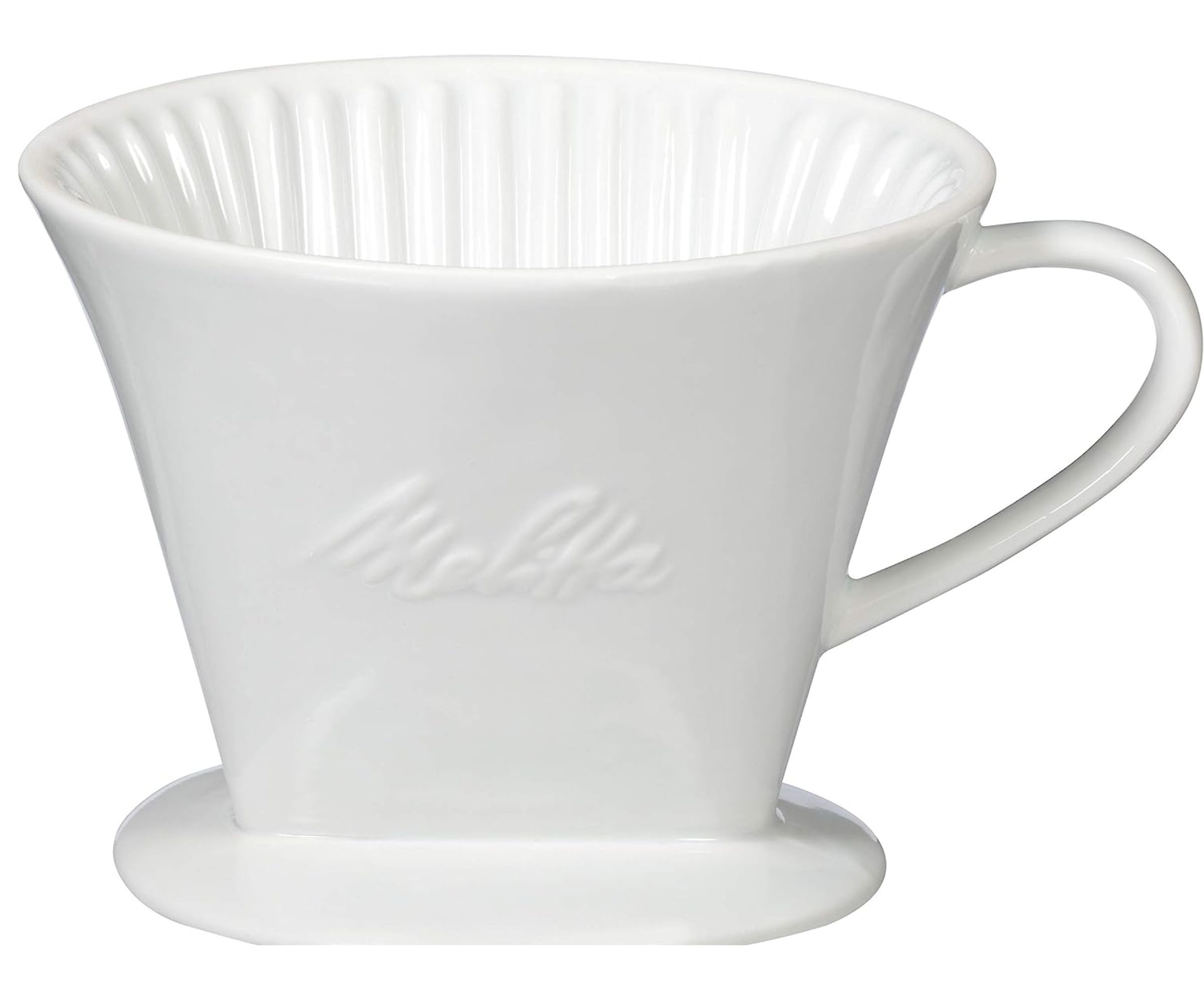
Unboxing
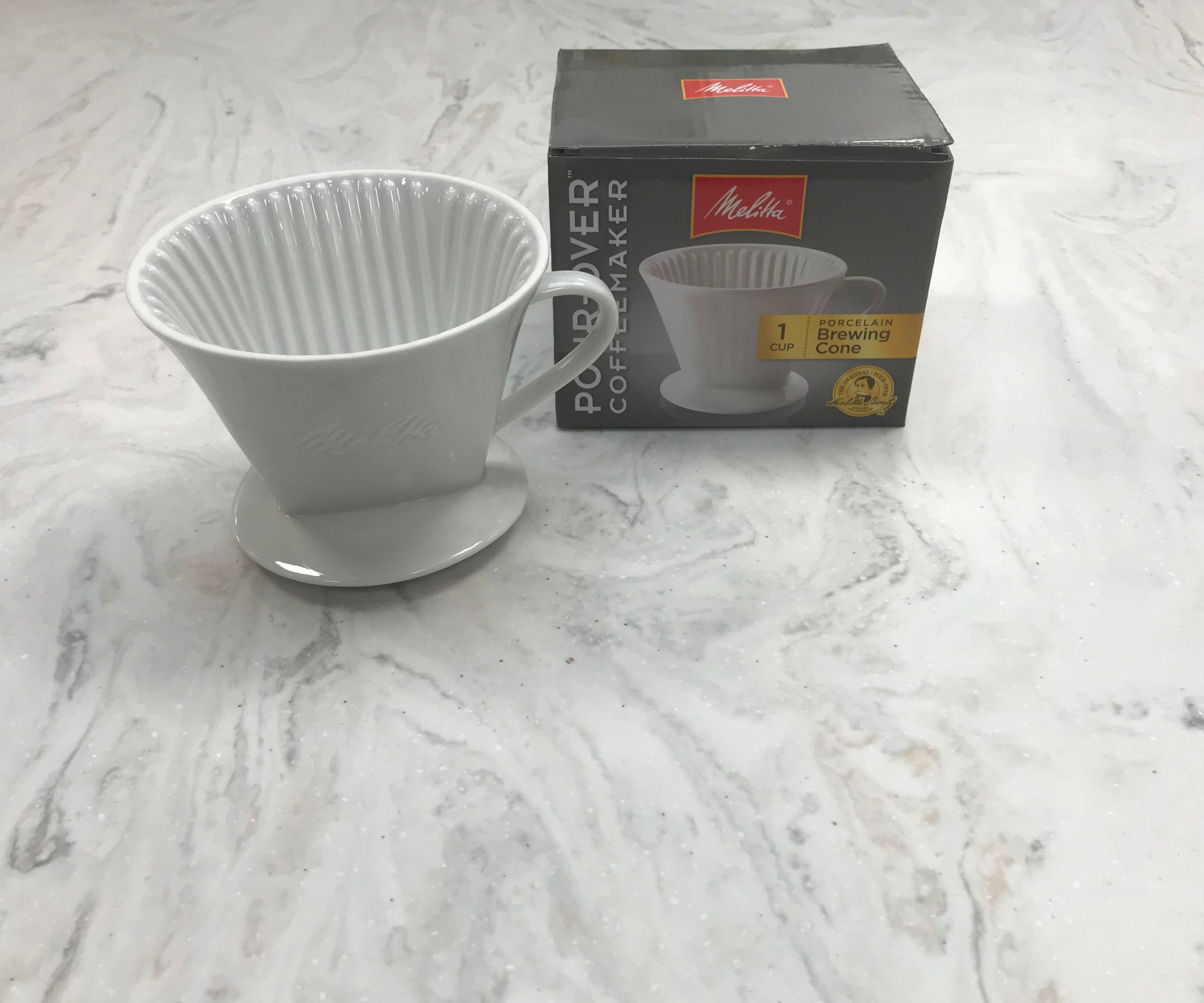
Packaging for the Melitta is minimal, which I always love. The cardboard box was cleverly shaped to keep the porcelain in pristine condition, without any extra plastic padding. It comes with three single-use Melitta filters, also available at Walmart, so if you've forgotten to buy them, you can get through the day without any caffeine withdrawal. However, though single-use filters are easy to clean up, they're also wasteful and an ongoing cost. I'd recommend buying a reusable filter, like this one from Walmart.
Who would it suit?
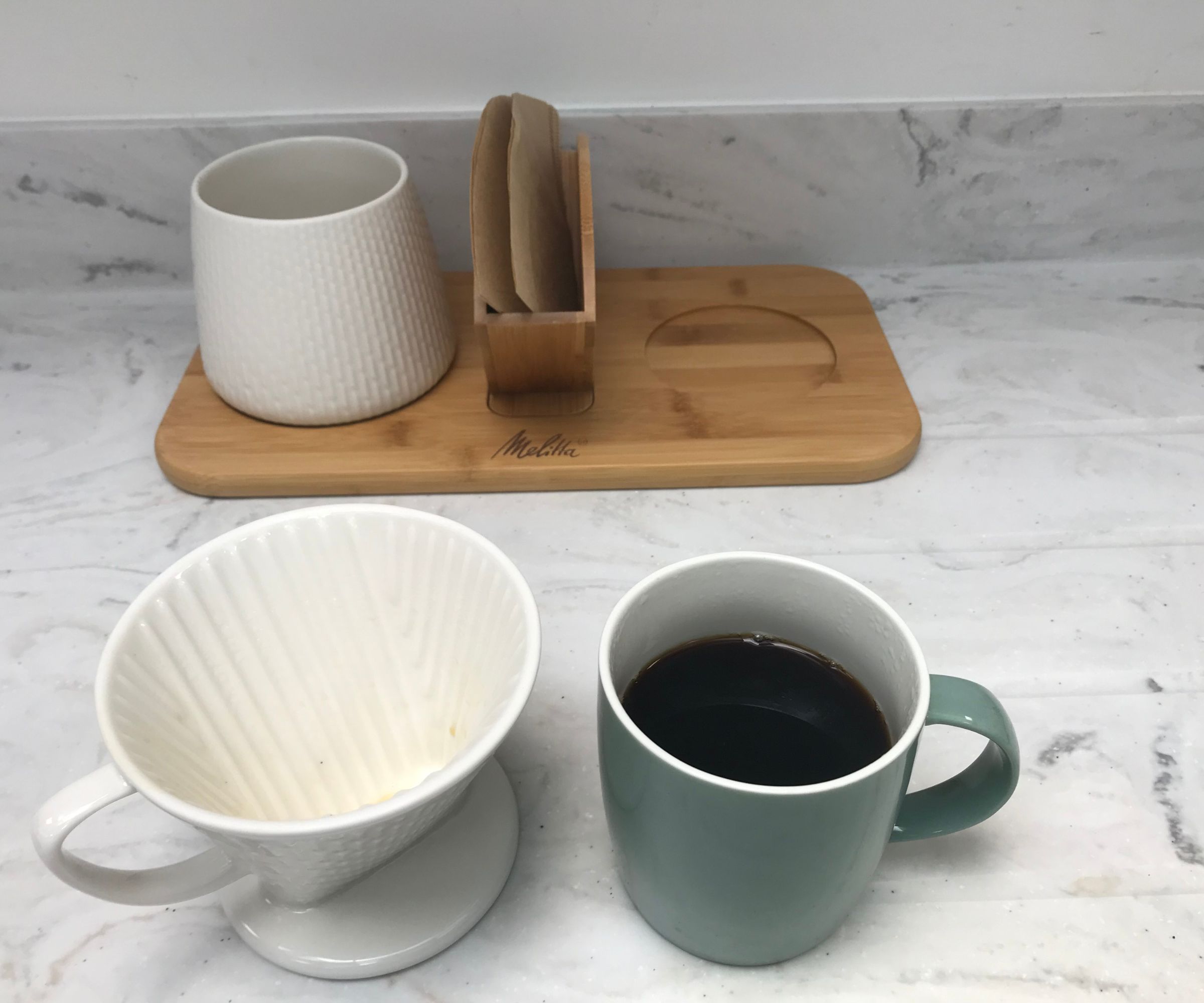
This porcelain cup would suit a lot of coffee connoisseurs. The first discriminator is taste. The Melitta makes clean, crisp, and light coffee, which really suits a lot of coffee drinkers. If you tend to make one coffee at a time, especially if you have a small kitchen, this single-cup pour over is perfect. Efficient, small, and chic, any kitchen will have space for it.
However, it has one drain hole, as opposed to three, so if you aren't a careful pourer, you might over-brew your coffee. Also, if you're in a hurry and you need to batch brew more coffee, this will take too long, because you need to pour your water over the coffee very specifically and you can only brew one cup at a time.
What is it like to use?
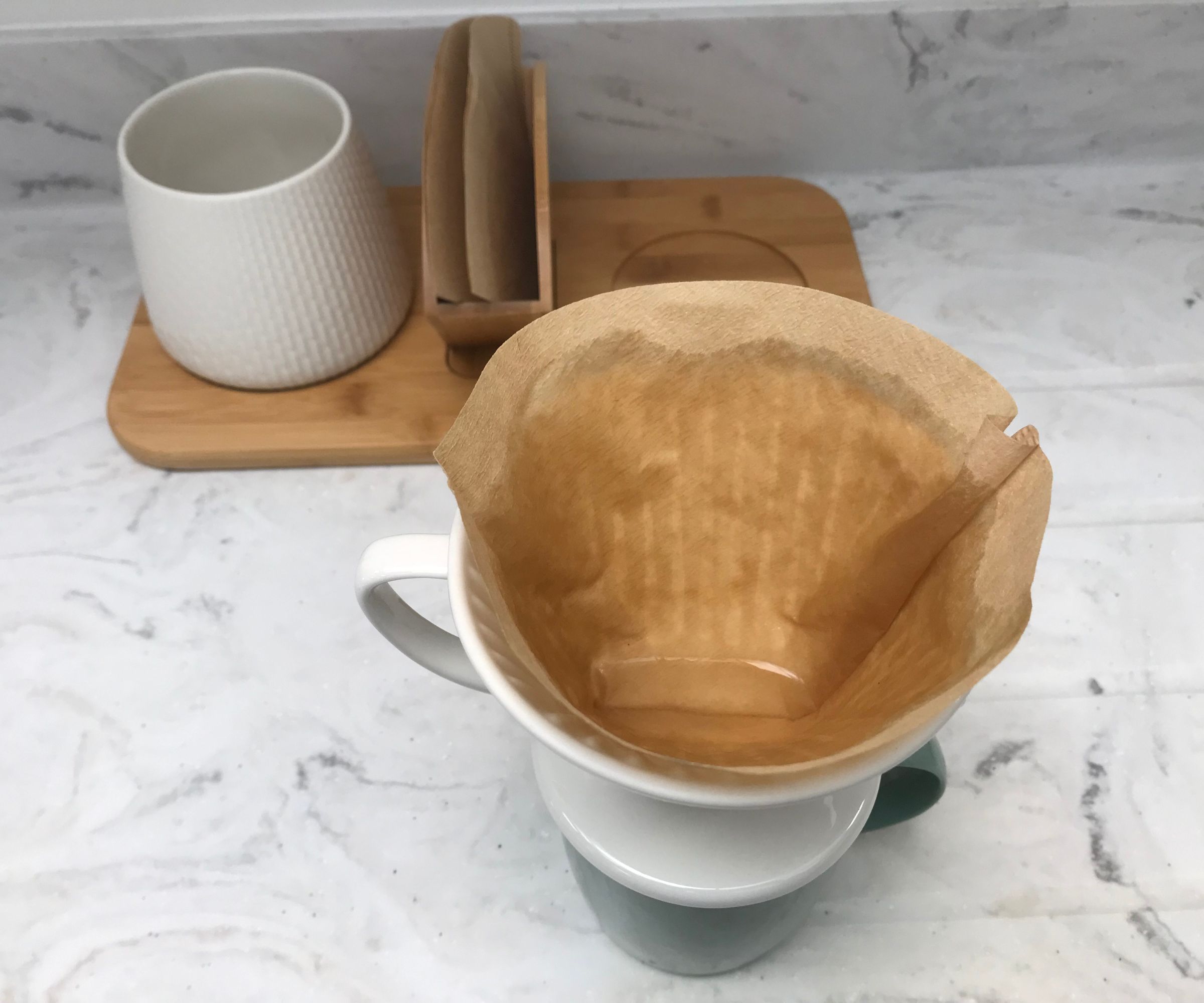
Pour overs are always straightforward to use, but they aren't always tidy. This Melitta is. I sat the Melitta directly over my cup, but you could sit it on a decanter to empty, dilute, and store your coffee as needed.
I placed my filter paper cone into the pour-over and saturated it with water. It's great to have a goose-neck kettle, like this one from Walmart, for occasions like this, because you can achieve a really precise stream of water. Unfortunately, I didn't, so my pour was a little rough, but the paper was still well-saturated. I poured in a spiral from the center of the funnel to the upper edges. This prepares your filter for extracting coffee oils. When the paper is dry, it absorbs some of the coffee oils into its fibers, rather than depositing them in your cup, meaning that you're more likely to over-extract your coffee, resulting in a bitter brew.
Next, I put 18 grams of coffee grounds into the bottom of my filter. I weighed these out in advance, but you could sit your filter on coffee scales, like these from Walmart (mine are like these from Walmart) for the whole process and measure it that way.
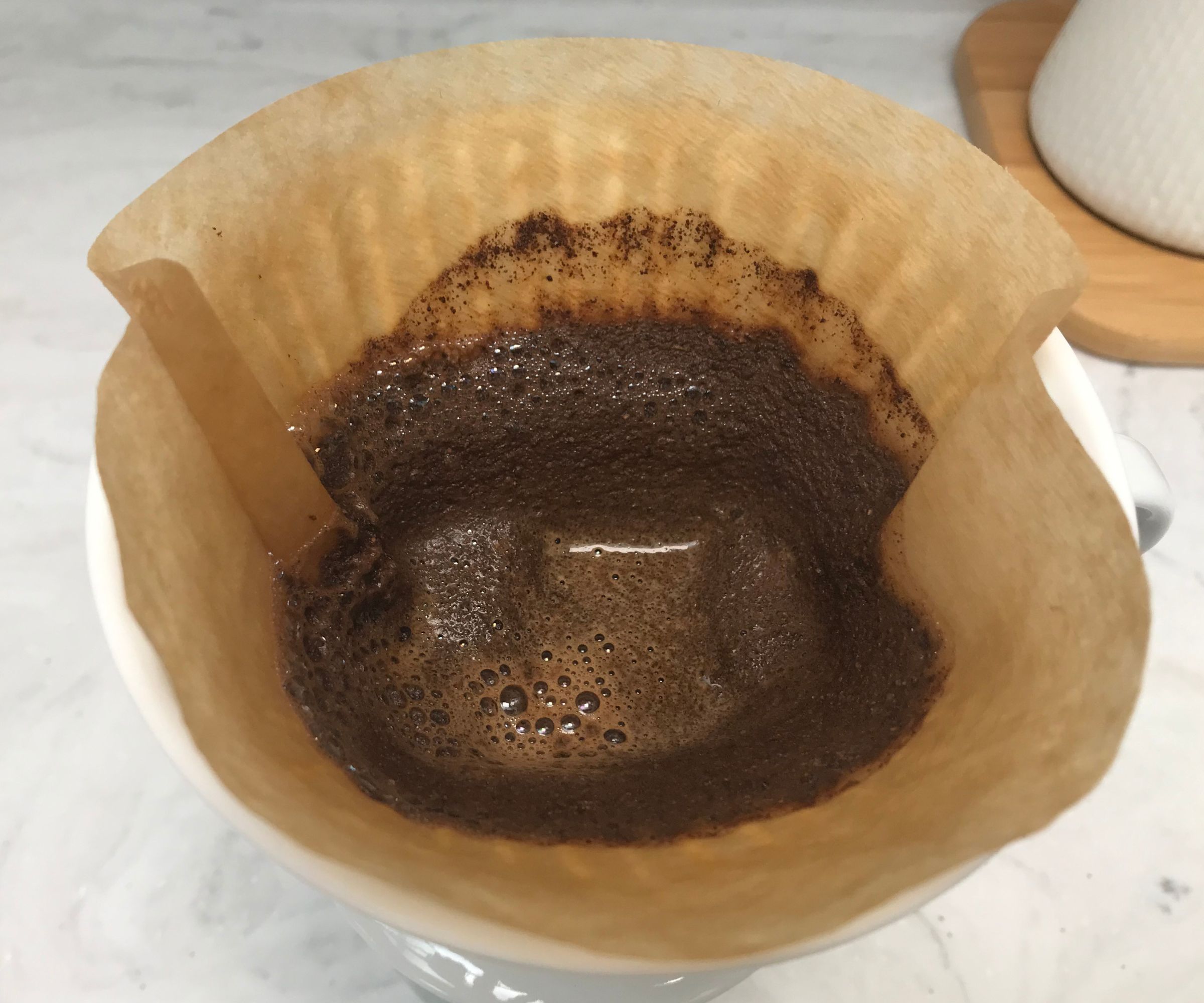
Next, I measured one and a half cups of boiling water into my kettle. Before you pour, make sure that your water isn't boiling hot, or it will burn the grounds. Ideally, it will be between 195 and 205 degrees Fahrenheit. Pour a little hot water over your grounds so that they are wet but not fully covered. This will 'bloom' your grounds, helping them to taste sweeter and less acidic.
Once you've let the water drain from these grounds, you can pour the rest of your cup of hot water over the grounds. This will filter through in a few minutes. Under the Melitta, you will have your coffee, ready to drink. Mine tasted like the paragon of pour-overs: delicate, light, and very singular in its taste.
Cleaning, storage, and maintenance
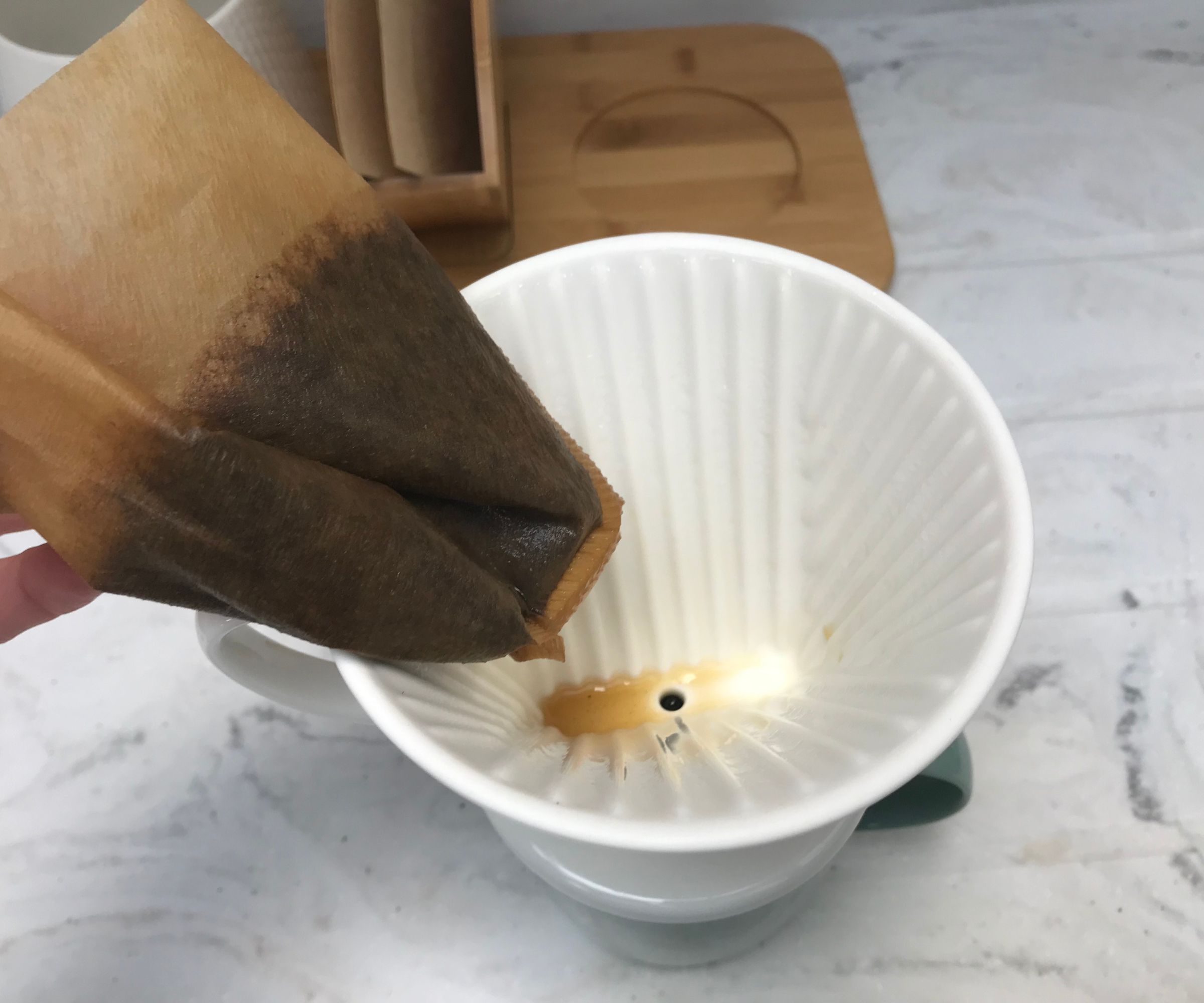
The beauty of pour-overs is in the clean-up. You can fold up your filter paper and place it in the food waste. The Melitta is dishwasher safe, but I washed mine by hand in warm, soapy water. It doesn't get very dirty, because the grounds are all contained in the filter paper, but it's still good to take care washing around the drain hole so that excess coffee isn't left behind for next time.
As for storing the Melitta, it's no bigger than a coffee mug. I guarantee you'll have room for this in your cupboards, especially compared to lots of other pour-overs and coffee machines. You don't need to do anything to keep it working well, except clean it after every use.
How does it rate online?

For $15, I'm not surprised that this is a popular pour-over. It's inexpensive, but it feels like a premium product. Lots of users commented on the single drip hole, which means that your coffee brews slower. A longer brew time results in a stronger coffee, which doesn't require much attention. Lots of people who praised the Melitta were busy coffee drinkers, who wanted a low-maintenance method. I found a few people who had switched from Chemex, available at Williams Sonoma or Kalita, available at Amazon, because they found pulse-pouring too time-consuming. Reviewers also commented on the taste. Lots of people recommended adjusting grind size and bean type if you want to switch up the notes in your brew.
Although having a single drip hole means that the coffee tastes stronger, some reviewers found that their coffees tasted a little bitter. Adding water in one go can over-extract the coffee oils from the grounds because they have a longer contact time with the water. If you measure your cup of water carefully, this shouldn't be a problem. Some reviewers with smaller cups found that the big and heavy Melitta felt unstable and poorly suited to their size. However, these must have quite narrow diameters, because I tried brewing straight into my regular cup without any issues.
How does it compare?
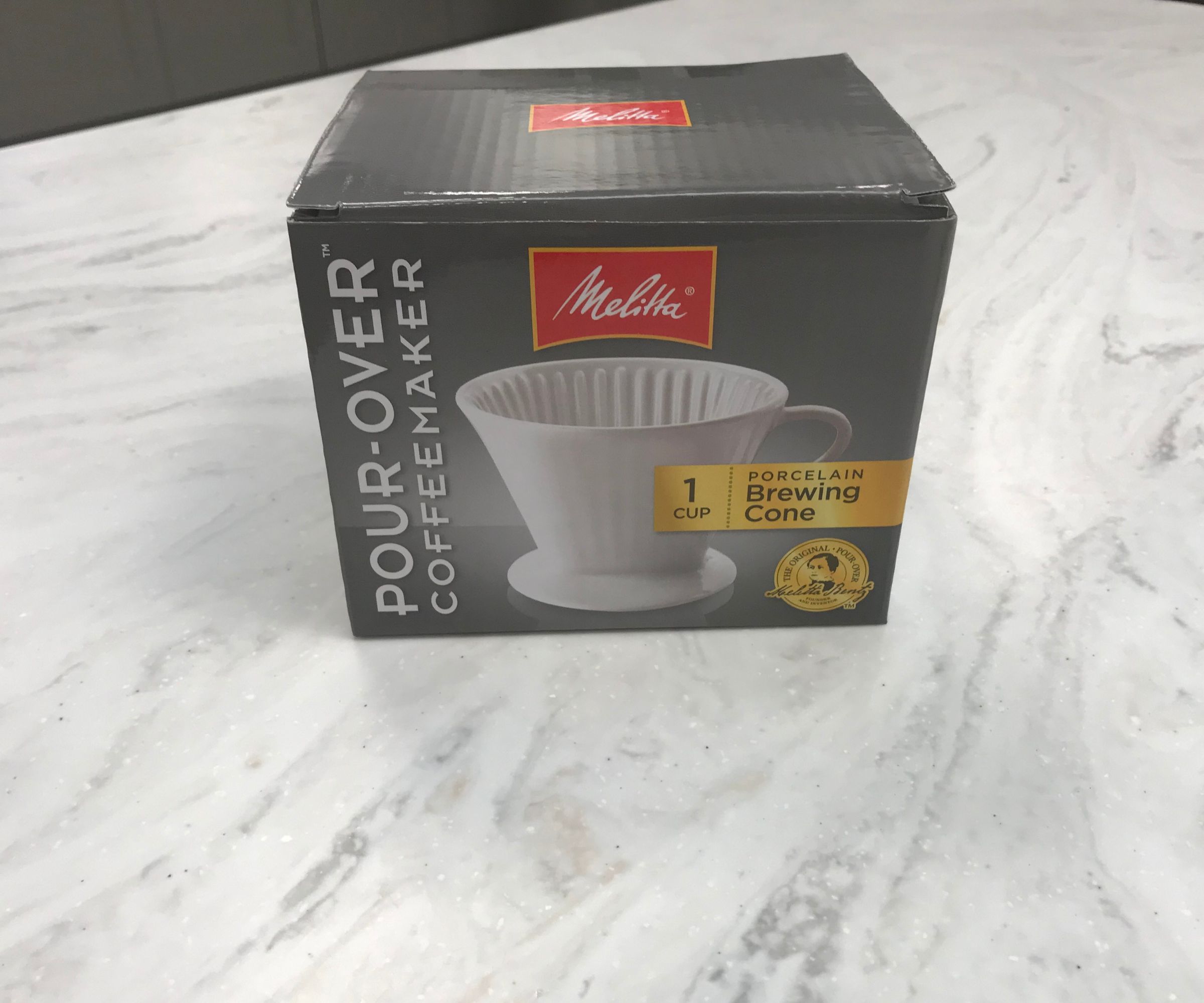
Melitta pour-overs are really good for making consistently good coffee. If you keep all factors – amount of coffee grounds, grind size, water — the same, you'll enjoy a good cup of coffee. However, the single hole slows the water down, so your coffee is at risk of over-extraction and tasting bitter if you don't bloom it properly.
Kalita pour-overs, like this one from Walmart, have three-hole drippers, so they drip faster. You need to pulse pour in this instance, letting your coffee bloom and drain a number of times. This takes a lot more effort but can result in a cleaner and less harsh cup of coffee. If you don't mind taking more time over your brew, the Kalita will give you a smoother, cleaner cup of coffee.
If both of these single-serve options limit you too much, the Chemex, which you can also buy from Walmart, is a great option for batch brewing. It's bigger, so needs more storage space, but you can keep any leftover coffee in the glass decanter. It requires a pulse-pour too, so needs more attention than the Melitta, but it's also a quicker process. If you're a big household, I'd go for the Chemex.
Should you buy it?

If you're looking for gift ideas, I think this set is perfect. Also, if you make single servings of coffee and you have a small kitchen, I wouldn't hesitate to buy the Melitta. It makes a quick, clean cup of coffee and looks classy too. Having seen the Artisan Set, available on Amazon in person, I would recommend treating yourself to the full collection. It's a really great foundation for creating your own coffee bar, especially if you want to store your coffee grounds properly too. Either way, you can't go wrong with the Melitta.
How we test

At Homes & Gardens we have a rigorous process for testing coffee makers. We take them to our dedicated test kitchen, which replicates yours at home, where we use them like you would. If they have any special features, we make sure to test those, so that you know whether they're gimmicks or genuinely good innovations.
As a priority, we make sure that our coffee makers can make a good brew. However, we also make notes on extraneous aspects, such as unboxing and cleaning, so that you don't have any surprises when you're using it at home. If you would like to know more, we have a page on how we test coffee makers.





